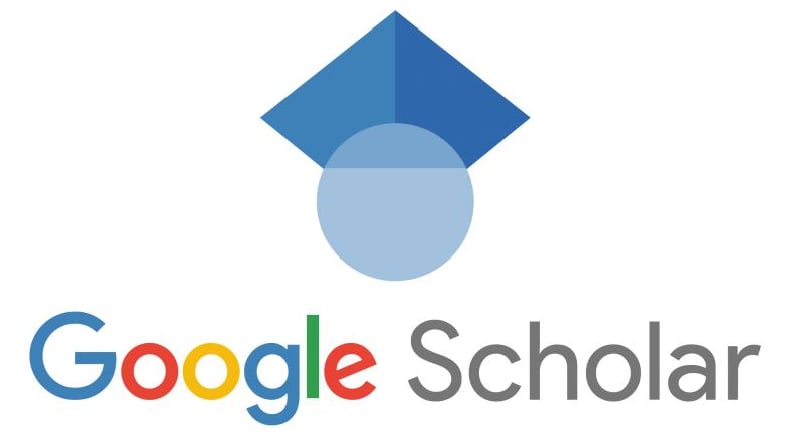Analysis of the Effect of ChatGPT on The Learning Productivity of Secondary School Students
Keywords:
ChatGPT, Learning Productivity, HighschoolAbstract
This study directs readers to find out the effect of chatGPT on the learning productivity of high school students. In the industrial era 5.0, humans have fast-paced demands in carrying out various activities in daily life. This study used a simple regression analysis technique to determine the significant difference between chatGPT and student productivity in secondary schools. Data collection was carried out using a questionnaire and given to 25 students of MTsN 2 Kota Kediri. The data that has been collected will be analyzed using simple regression consisting of several tests including, normality and linearity tests, and heteroscedasticity tests. From these tests, the results obtained a significance value above 0.05 so it can be concluded that the use of chatGPT affects student learning productivity
Downloads
References
Ali, Jamal Kaid Mohammed, Muayad Abdulhalim Ahmad Shamsan, Taha Ahmed Hezam, dan Ahmed A. Q. Mohammed. (2023). Impact of ChatGPT on Learning Motivation. Journal of English Studies in Arabia Felix 2(1):41–49. doi: 10.56540/jesaf.v2i1.51.
Amelia, Eka. (2019). Pengaruh Minat Belajar Terhadap Kesulitan Belajar Siswa Kelas X Akuntansi Pada Mata Pelajaran Akuntansi Di Smk Negeri 1 Makassar. Eprints 1–6.
Anon. (2020). Education in a post-COVID world: Nine ideas for public action International Commission on the Futures of Education.
Aulia, B, Setiadi Putri, Kanaya Adristi Wulandari, Husnah Nur, dan Laela Ermaya. (2023). “Pentingnya Sosialisasi Gerakan Anti Narkoba di Kalangan Remaja.” Bela Negara UPN Veteran Jakarta 1:63–75.
Aydin, Ömer, dan Enis Karaarslan. (2022). OpenAI ChatGPT Generated Literature Review: Digital Twin in Healthcare.
Biswas, Som S. (2023). “Potential Use of Chat GPT in Global Warming.” Annals of Biomedical Engineering 51(6):1126–27. doi: 10.1007/s10439-023-03171-8.
Bunsaman, Shafila Mardiana, dan Hetty Krisnani. (2020). “Peran Orangtua Dalam Pencegahan Dan Penanganan Penyalahgunaan Narkoba Pada Remaja.” Prosiding Penelitian dan Pengabdian kepada Masyarakat 7(1):221. doi: 10.24198/jppm.v7i1.28132.
Candra, Henry, Endah Setyaningsih, Jeanny Pragantha, dan Rifai Chai. (2019). “Peningkatan produktivitas pada proses belajar mengajar di ruang kelas dengan menggunakan stimulasi cahaya dan suara untuk meningkatkan fokus dan kenyamanan peserta ajar.” Simposium Nasional RAPI XVII (1):9–15.
Chinonso, Opara Emmanuel, Adalikwu Mfon-Ette Theresa, dan Tolorunleke Caroline Aduke. (2023). “ChatGPT for Teaching, Learning and Research: Prospects and Challenges.” Global Academic Journal of Humanities and Social Sciences 5(02):33–40. doi: 10.36348/gajhss.2023.v05i02.001.
De’, Rahul, Neena Pandey, dan Abhipsa Pal. (2020). “Impact of digital surge during Covid-19 pandemic: A viewpoint on research and practice.” International Journal of Information Management 55. doi: 10.1016/j.ijinfomgt.2020.102171.
Febriana, Dina Triana, dan Nano Nurdiansyah. (2021). “Meningkatkan Produktivitas dalam Kegiatan Belajardan Kesadaran Hukum dalam Pelaksanaan ProtokolKesehatan di Masa Pandemi.” in Proceedings UIN Sunan Gunung Djati Bandung. Vol. 2. Universitas Indonesia, Directorate of Research and Public Service.
Ghozali, Imam. (2013). Aplikasi Analisis Multivariate Dengan Program IBM SPSS 21 Update PLS Regresi.
Harahap, Machyudin Agung, dan Susri Adeni. (2020). Tren Penggunaan Media Sosial Selama Pandemi Di Indonesia. Vol. 7.
Iswatiningsih, Daroe. (2023). Meningkatkan Produktivitas Siswa Dalam Pembelajaran Bahasa Indonesia Di Era Digital. KABASTRA 2(2).
King, Michael R. (2023). A Conversation on Artificial Intelligence, Chatbots, and Plagiarism in Higher Education. Cellular and Molecular Bioengineering 16(1):1–2.
Krukowski, Rebecca A., Reshma Jagsi, dan Michelle I. Cardel. (2021). “Academic productivity differences by gender and child age in science, technology, engineering, mathematics, and medicine faculty during the COVID-19 pandemic.” Journal of Women’s Health 30(3):341–47. doi: 10.1089/jwh.2020.8710.
Mulyaningsih, Ely. (2022). Kontribusi Organisasi Dalam Meningkatkan Produktivitas Guru Kabupaten Ciamis. Indonesian Journal of Educational Development Volume 3:220–28. doi: 10.5281/zenodo.7032126.
Octavia, S. A. (2020). Motivasi Belajar Dalam Perkembangan Remaja. Deepublish.
Paksi, Arie Kusuma, Idham Badruzaman, Muhammad Ilham, dan Rani Dian Iswari. (2022). Increasing The Productivity Of Youth During The Pandemic Through The Making Of Macrames In Ngrukem Village Mlarak Ponorogo. Abdimas Galuh 4(2):779–88.
Pokhrel, Sumitra, dan Roshan Chhetri. (2021). A Literature Review on Impact of COVID-19 Pandemic on Teaching and Learning. Higher Education for the Future 8(1):133–41. doi: 10.1177/2347631120983481.
Potter, W. James. (2019). Media Literacy. Vol. 9.
Reski, Niko. (2021). Tingkat Minat Belajar Siswa Kelas IX SMPN 11 Kota Sungai Penuh.” Jurnal Inovasi Penelitian 1(11):2485–90.
Sok, Sarin, & Kimkong Heng. (2023). “ChatGPT for Education and Research: A Review of Benefits and Risks.” SSRN Electronic Journal. doi: 10.2139/ssrn.4378735.
Zietz, Susannah, Jacobus de Hoop, dan Sudhanshu Handa. (2018). “The role of productive activities in the lives of adolescents: Photovoice evidence from Malawi.” Children and Youth Services Review 86:246–55. doi: https://doi.org/10.1016/j.childyouth.2018.01.031.
Downloads
Published
How to Cite
Issue
Section
License
Copyright (c) 2023 Axel Faiz Salmaan

This work is licensed under a Creative Commons Attribution 4.0 International License.






